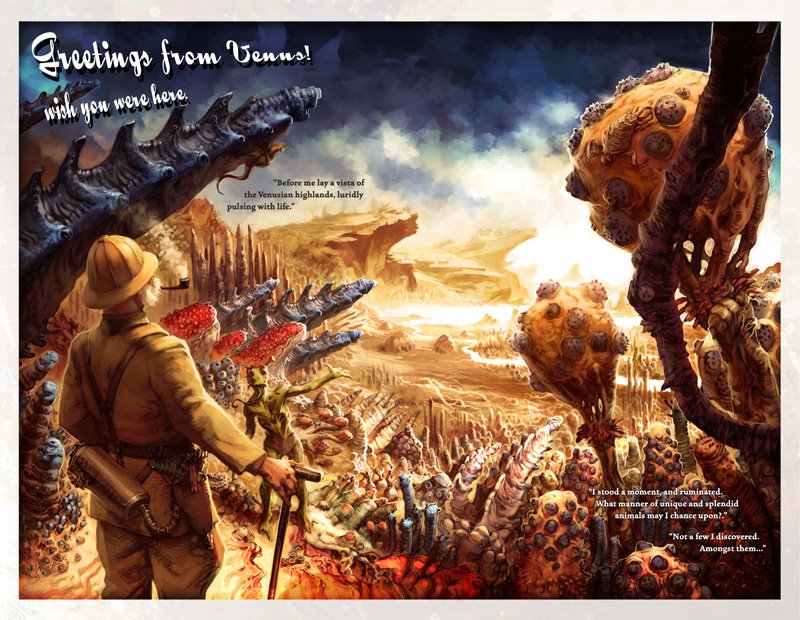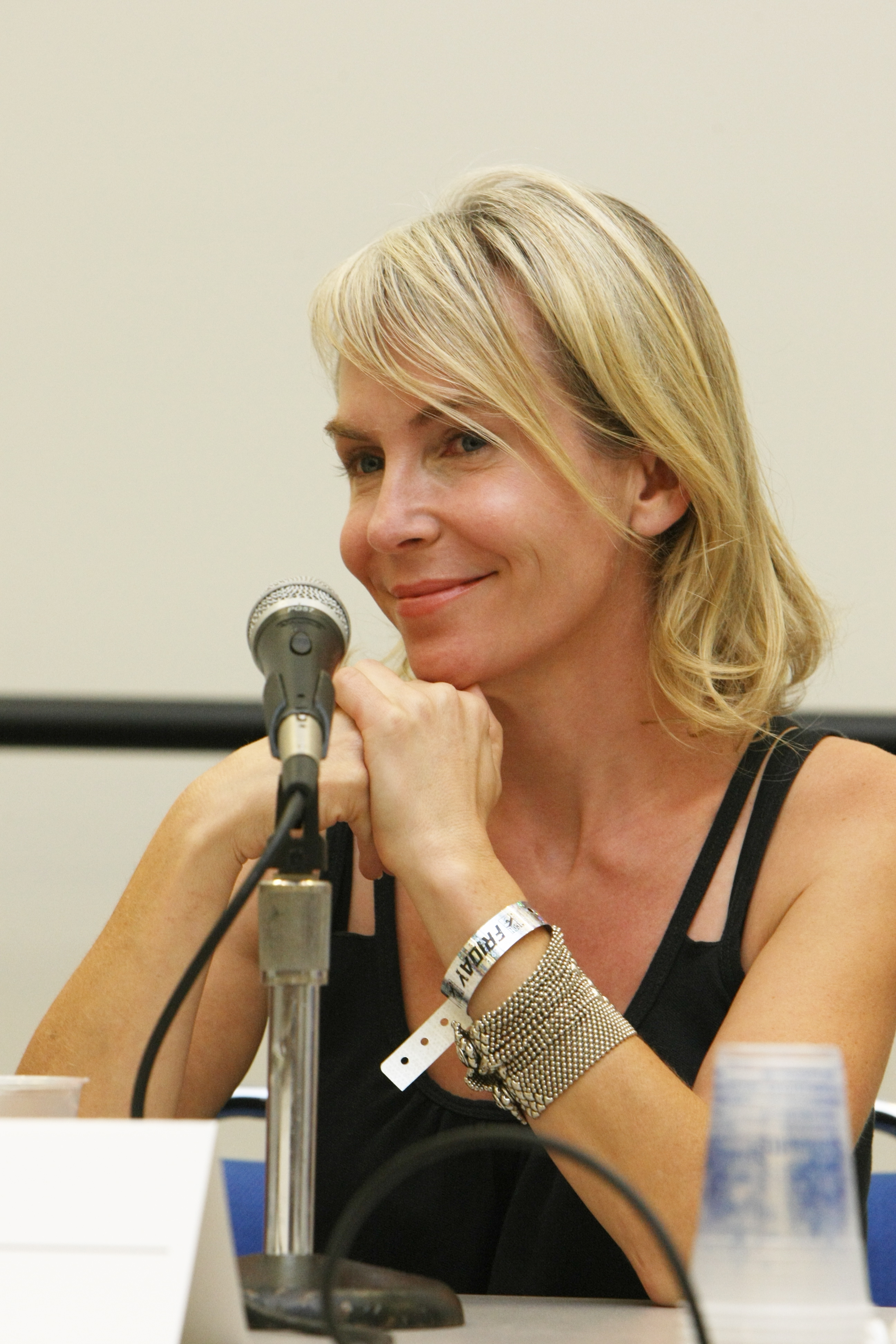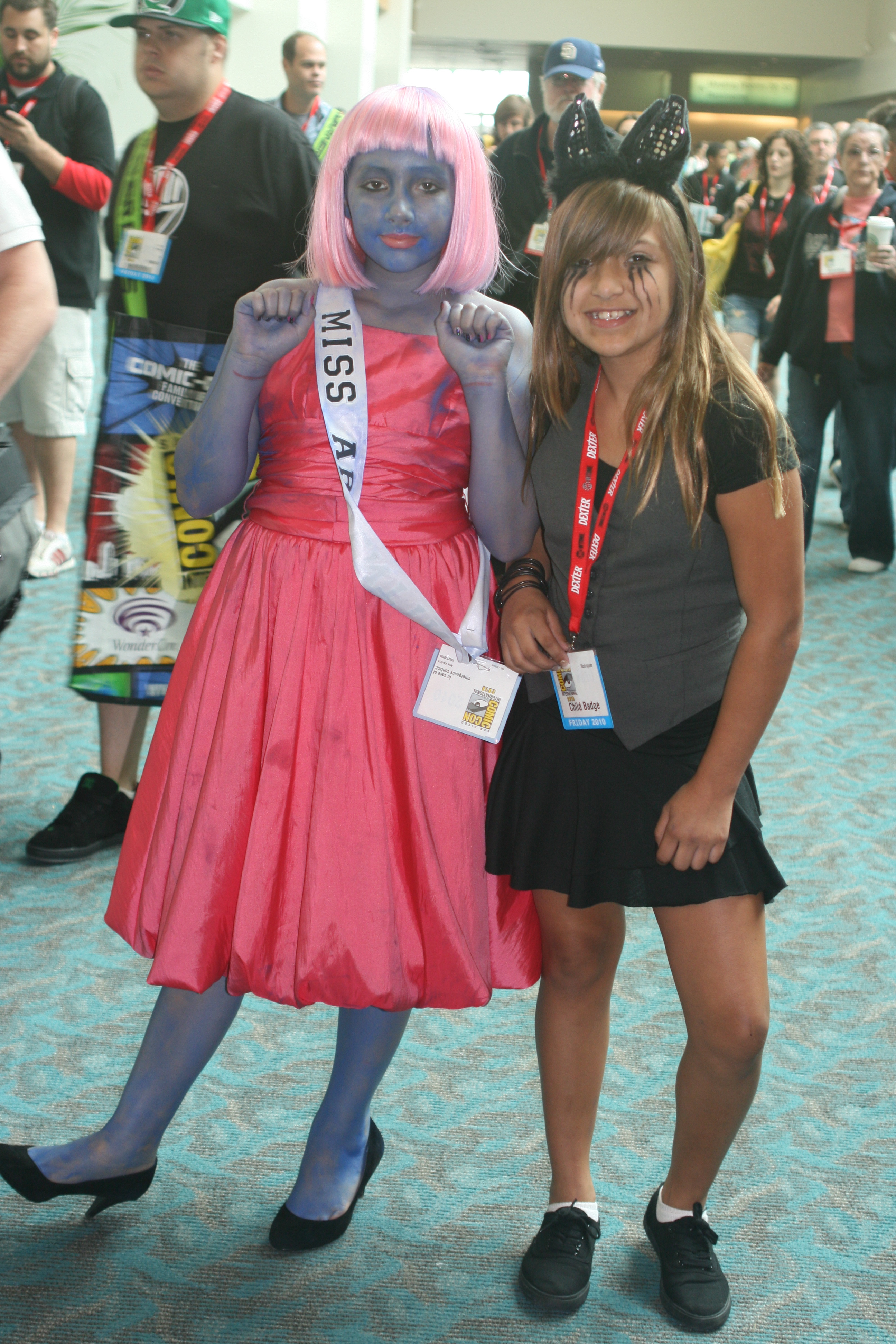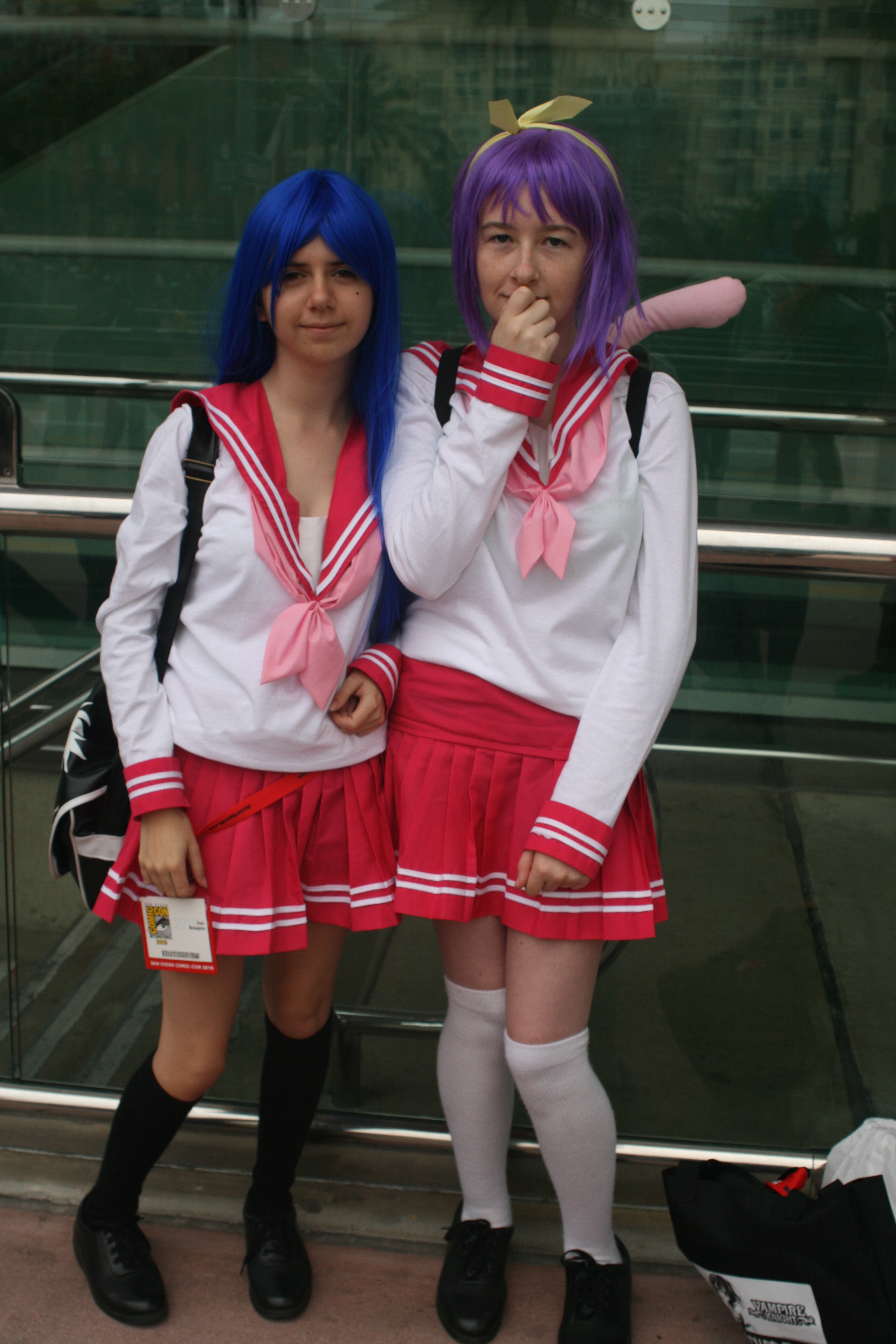It is fun to see the stars, but one of the things I love best at Comic-Con is the chance to hear from the people behind the scenes about how entertainment gets produced and how creative people develop their careers and do their jobs. I attended panels on production design, women who write “genre,” and — always one of the highlights — “The Black Panel,” with African-Americans who work in the industry, and I spoke one-on-one with Greg Broadmore, the “lead concept designer” of “District 9,” who works at the legendary Weta special effects group (“Lord of the Rings”).
At The Black Panel, moderator Michael Davis talked with entertainment attorney Darrel Miller, novelist Nnedi Okorafor, artist Denys Cowan, and writer/producer/director Reggie Hudlin, about making your own opportunities and how “there’s nothing to fear except Mel Gibson.” There was a special tribute to actor/director Bill Duke, who answered questions and gave advice to audience members trying to get their stories told. Davis spoke about his efforts to create a program for reluctant readers based on comic books, called The Action Files and the panel recommended resources like CarlBrandon.org for finding stories about characters of color in speculative fiction.
 Greg Broadmore told me about creating the fabulous alien creatures for “District 9,” which involved literally hundreds of different ideas. At one point, they were going to be based on a sort of walrus-elephant design for a while before they became the iconic insect-crustacean we saw in the film. One reason is the simpler movements. He called them the “robots of the animal world.” Insects and crustaceans bend only at the joints and you do not have to animate all of the complex and subtle muscle tensing and vein effects. The insect-crustacean also had the advantage of being inherently repelling to us, but they also wanted the creatures to be sympathetic over the course of the movie. So they worked on the eyes, making them big, “quite childlike,” evoking a conflicting inherent emotion in the audience. Broadmore’s current project is the amazing world of Dr. Grordbort’s Infallible Aether Oscillators, an amazing alternate universe story of Earth’s colonizing the rest of the solar system in the 1930’s, as he says, “that era of what could be.”
Greg Broadmore told me about creating the fabulous alien creatures for “District 9,” which involved literally hundreds of different ideas. At one point, they were going to be based on a sort of walrus-elephant design for a while before they became the iconic insect-crustacean we saw in the film. One reason is the simpler movements. He called them the “robots of the animal world.” Insects and crustaceans bend only at the joints and you do not have to animate all of the complex and subtle muscle tensing and vein effects. The insect-crustacean also had the advantage of being inherently repelling to us, but they also wanted the creatures to be sympathetic over the course of the movie. So they worked on the eyes, making them big, “quite childlike,” evoking a conflicting inherent emotion in the audience. Broadmore’s current project is the amazing world of Dr. Grordbort’s Infallible Aether Oscillators, an amazing alternate universe story of Earth’s colonizing the rest of the solar system in the 1930’s, as he says, “that era of what could be.”
I always love hearing from the production designers, the people responsible for the overall look of a film, everything from the grandest galaxy to the tiniest buttonhole. This year’s panel was sensational. They described how they read a script and then “re-write it visually.” They talked about the pros and cons of constructing real sets versus working with CGI, what it is like to oversee hundreds of designers and the people who bring those designs to life versus working as an art department of one, creating an entirely imaginative fantasy world versus meticulously re-creating an historic era. They spoke about the importance of the things they have to design so that we don’t notice them — we would be distracted by them if they stood out, but because they are so seamlessly integrated into what we see on screen we don’t get distracted from the story. And we got to see samples of their work, including some breathtaking glimpses of the new Narnia “Dawn Treader” movie.
Mimi Gramatky told the audience that she studied architecture in school and still works on real-life building projects. But when she found out that if she worked in film she could design two hundred buildings a year, and not one of them had to meet safety code requirements, she was hooked. John Muto (“Terminator”) said that to succeed, designers need more than imagination; you need the ability to understand what is practical. And all of them agreed that production designers need to speak the language of everyone else who works on the movie, from the people who are actually responsible for construction to the director of photography and the people who oversee the budgets. Management and relationship skills are as important as creative talent, and the goal is to do such a good job that everyone you work with wants to work with you again.
 The panel of women writers was titled “Girls Gone Genre,” because it featured women writing something other than romantic comedies. Actress Felicia Day was frustrated with the roles she was considered for and the pressure to look the way Hollywood thinks actresses should look — “you have to be either glam or quirky.” So she began to write The Guild, a popular web series about a group of friends who play massively multi-player role-playing games, now entering its fourth season. Other panelists included the scriptwriter for the “Twilight” series, Melissa Rosenberg, Laeta Kalogridis (“Shutter Island”), and Marti Noxon (“Buffy the Vampire Slayer,” “Mad Men”) (pictured). They did compare shoes (Kalogridis hates to dress up and wear make-up, which she says works for her because people think she is tortured and serious, but Noxon enjoys fashion). But they talked candidly and with insight about the challenges and opportunities they face in not being “the chick who wrote the chick” (Gail Simone, writer Wonder Woman and Birds of Prey). It is not just about getting the chance to write. Even when you have the job, you have to be careful about how you express your views. Noxon said, “When you try to improve it, they hear their wife.” Their frustration was less based on gender than on the tension between the business side and the creative side. “Huge electricity companies own story-telling companies,” said Kalogridis.
The panel of women writers was titled “Girls Gone Genre,” because it featured women writing something other than romantic comedies. Actress Felicia Day was frustrated with the roles she was considered for and the pressure to look the way Hollywood thinks actresses should look — “you have to be either glam or quirky.” So she began to write The Guild, a popular web series about a group of friends who play massively multi-player role-playing games, now entering its fourth season. Other panelists included the scriptwriter for the “Twilight” series, Melissa Rosenberg, Laeta Kalogridis (“Shutter Island”), and Marti Noxon (“Buffy the Vampire Slayer,” “Mad Men”) (pictured). They did compare shoes (Kalogridis hates to dress up and wear make-up, which she says works for her because people think she is tortured and serious, but Noxon enjoys fashion). But they talked candidly and with insight about the challenges and opportunities they face in not being “the chick who wrote the chick” (Gail Simone, writer Wonder Woman and Birds of Prey). It is not just about getting the chance to write. Even when you have the job, you have to be careful about how you express your views. Noxon said, “When you try to improve it, they hear their wife.” Their frustration was less based on gender than on the tension between the business side and the creative side. “Huge electricity companies own story-telling companies,” said Kalogridis.
series.








